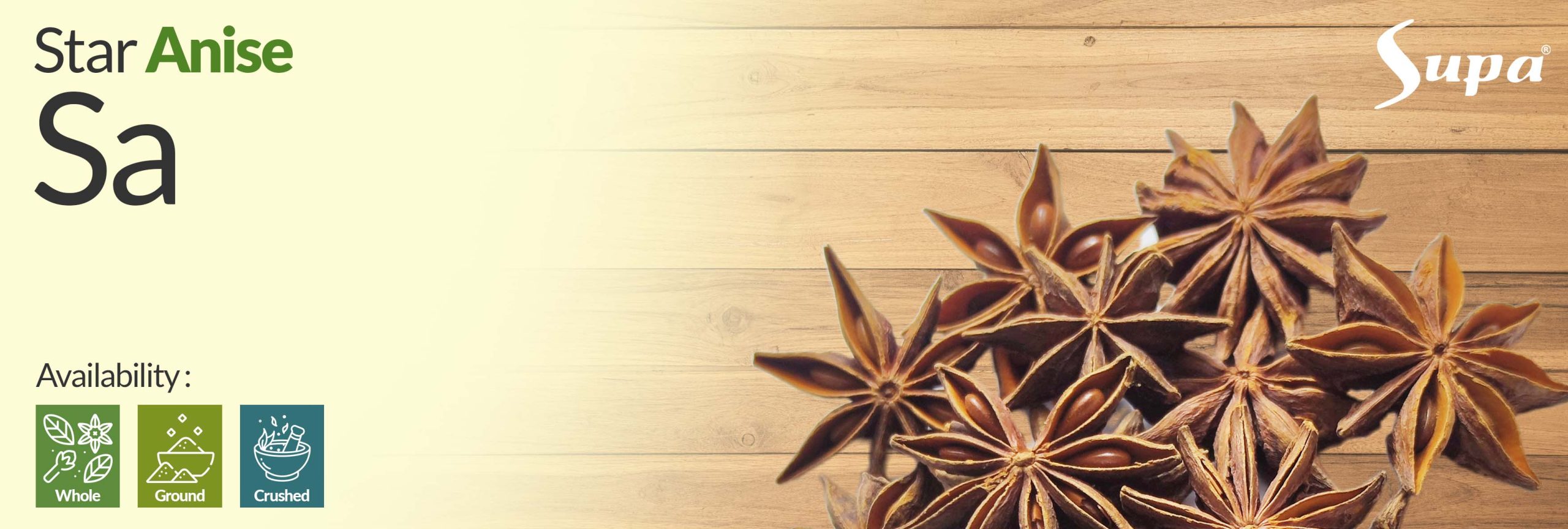
The history of star anise in China and Vietnam is deeply intertwined with their rich cultural and culinary heritage. Both countries have a long tradition of using star anise in various aspects of their societies, from traditional medicine to regional cuisines.
In China, star anise has been cultivated and used for thousands of years. Its use can be traced back to ancient times when it played a crucial role in Chinese traditional medicine. The Chinese recognized star anise’s potential health benefits, and it was commonly used to treat digestive issues, colds, and respiratory ailments. Moreover, star anise’s pleasant aroma and unique flavor made it a popular spice in Chinese cuisine, particularly in savory dishes, sauces, and broths.
In Vietnam, star anise also holds a significant place in the country’s culinary culture. It is a key ingredient in many Vietnamese dishes, especially in iconic dishes like pho, a popular noodle soup. The warm and aromatic flavor of star anise complements the savory and herbal elements of Vietnamese cuisine, making it an essential spice in many traditional recipes.
The widespread use of star anise in both China and Vietnam made it a sought-after commodity in the ancient spice trade routes. As a result, star anise became a valuable spice and contributed to cultural exchange between these two neighboring countries and other regions in Asia.
Today, star anise continues to be an integral part of Chinese and Vietnamese cuisines. Its versatility in both culinary and medicinal applications has ensured its enduring popularity and cultural significance. As China and Vietnam preserve their culinary traditions while embracing modern influences, star anise remains a cherished spice that reflects their shared history and culinary identity.
Flavor: The flavor of star anise is sweet, warm, and intensely aromatic. It is often described as having a licorice-like taste, with subtle hints of bitterness and spiciness. The combination of these flavor elements gives star anise a unique and complex taste profile. Taste: When used in cooking, star anise imparts a strong and potent taste to dishes. It adds depth and richness to savory recipes like stews, broths, and sauces. In sweet dishes, star anise can complement the sweetness of desserts, adding a layer of complexity to the overall taste. Aroma: The aroma of star anise is one of its most captivating features. It has a sweet and fragrant scent that is reminiscent of licorice and fennel. When star anise is added to dishes or beverages, it releases its delightful aroma, filling the air with a comforting and inviting fragrance.
Culinary Spice: Star anise is widely used as a culinary spice in various Asian cuisines, including Chinese, Vietnamese, and Indian. It is a key ingredient in savory dishes, sauces, broths, and soups, adding a warm and aromatic flavor to the recipes. Flavoring Beverages: Star anise is often used to flavor beverages such as herbal teas, mulled wines, and spiced cocktails. Its distinct licorice-like taste infuses the drinks with a delightful and comforting aroma. Baking and Desserts: Star anise is occasionally used in baking and dessert recipes to add a unique twist to dishes like cookies, cakes, and fruit compotes. Its sweet and aromatic profile complements sweet treats. Medicinal Uses: Star anise is used in traditional medicine, particularly in Chinese herbal remedies, for its potential health benefits. It is believed to aid digestion, alleviate respiratory issues, and promote overall well-being. Potpourri and Home Fragrance: Dried star anise can be used in potpourri and homemade scented sachets to add a pleasing and aromatic fragrance to homes and spaces. Its captivating scent makes it a popular choice for adding a natural and comforting aroma to indoor environments.
Origin : Indonesia Botanical Name : IIIicium verum Composition : Star Anise Color : Dark Brown Moisture Content : Max 12% Shelf Life : 12 Months Loadability : 20 FCL Package : Carton Packing *For more detailed specifications, please feel free to contact us.
Company Profile Brochure PDF


